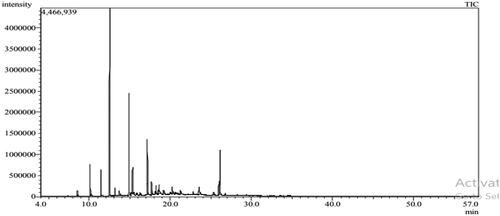Figures & data
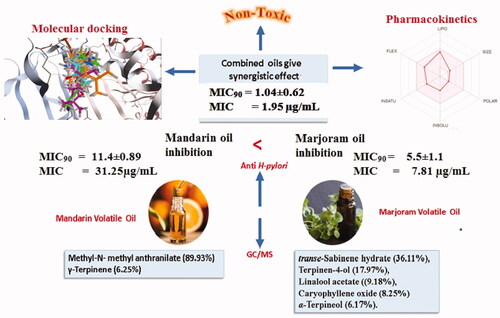
Table 1. The essential oil composition of mandarin leaves oil.
Table 2. The essential oil composition of marjoram oil.
Figure 3. The MIC90 & MIC graphs of Anti-Helicobacter pylori activity of mandarin oil leaves (A), marjoram oil (B), equal amounts of both oils(C), and Clarithromycin (D) as standard. All determinations were carried out in a triplicate manner and values are expressed as the mean ± SD.
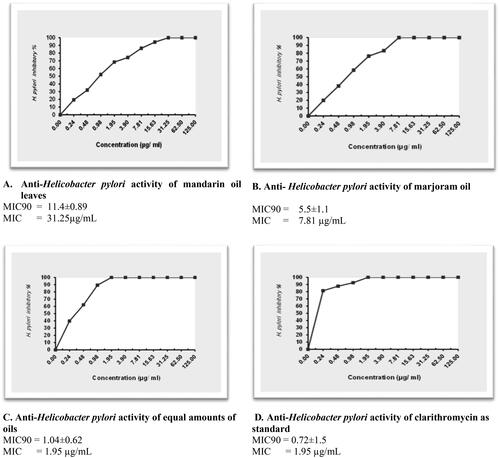
Figure 4. 2D and 3D-binding affinities of caryophyllene oxide (A,D), linalyl acetate (B,E), methyl-N-methyl anthranilate (C,F) and concomitant interactions of seven major compounds identified in marjoram and mandarin oils with the active sites of H. pylori urease domain.
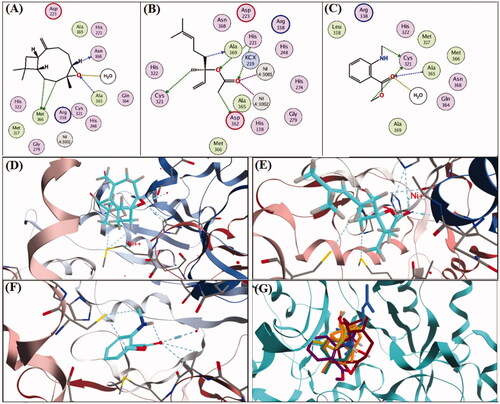
Figure 5. 2D and 3D-binding affinities of caryophyllene oxide (A,D), linalyl acetate (B,E), methyl-N-methyl anthranilate (C,F) and concomitant interactions of seven major compounds identified in marjoram and mandarin oils with the active sites of H. pylori CagA domain.
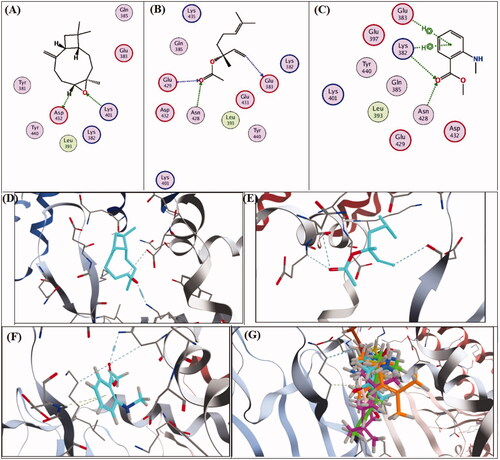
Table 3. Docking scores of marjoram and mandarin major oil compounds on H. pylori virulent factors domains (urease and CagA).
Table 4. The predicted toxicity of marjoram and mandarin major oil compounds.
Figure 6. The predicted physicochemical properties for selected compounds, such as linalyl acetate (A) and trans-sabinene hydrate (B).
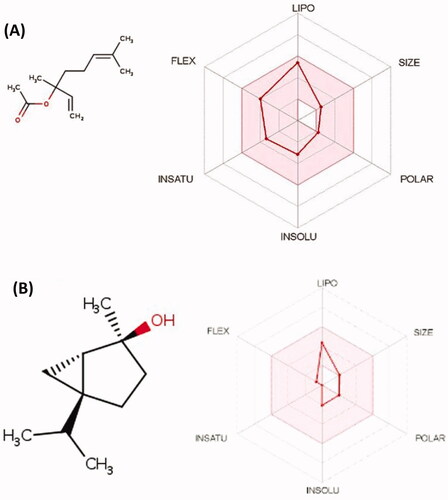
Table 5. The predicted pharmacokinetics of marjoram and mandarin major oil compounds.


